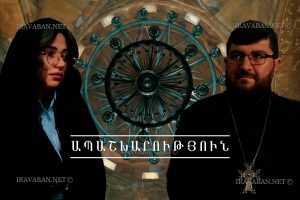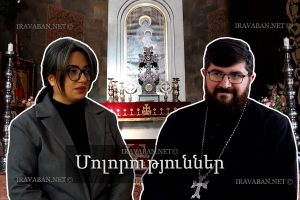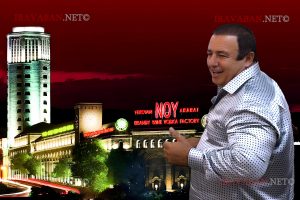As part of the “Church and Law” interview series, Iravaban.net spoke with Father Bardughimeos Hakobyan, the spiritual pastor of St. Martyrs Church of the Araratian Patriarchal Diocese, on the topic of “Pilgrimage, Holy Sites, and Modern Challenges.”
-How has the tradition of pilgrimage developed in Armenia, and what significance does it have today?
-Pilgrimage has a very great significance. We Christians are in a great Christian covenant, meaning God has made a covenant with man several times before Christ. The first covenant was with Noah, when after the flood God promised Noah that He would no longer punish His people with a flood, and the rainbow became the sign of the covenant. Then God made a covenant with Abraham and it reached up to Christ. Through Christ, God made a covenant once again. Now we are in a covenant, but from time to time we break it when we sin, when we find ourselves in some bad situation. By our will or regardless of our will, we periodically break that covenant.
-What are the most famous holy sites in Armenia, and how are they preserved and managed?
-We cannot list the most famous holy sites because there are very many famous holy sites in Armenia – Tatev, Noravank, Surb Khach. Let me put it this way: in every province, there are many powerful and influential churches that are famous holy sites. Recently, more people visit St. Hovhannes, but it doesn’t mean that it’s more important than the others. What’s more important is how a person goes on a pilgrimage. Is the pilgrimage turning into an excursion, or is one going to renew one’s connection with God, going to converse with God?
-Why do people visit the St. Hovhannes Chapel, and what beliefs are associated with it?
-Relics of St. John the Baptist have been preserved there, and recently it has gained great significance for the people, because more has been voiced about the miracles performed there, and there is also a custom that if a person’s vow has been fulfilled, they place a cross-stone, regardless of whether it’s big or small. When people visit and see so many cross-stones, they think that it’s truly a powerful place and start talking about miracles happening there, but that doesn’t mean miracles don’t happen in other holy sites. Maybe more happen, but they’re not talked about, this is the problem.
-In recent years, a large number of cross-stones have been placed around the St. Hovhannes Chapel, which sometimes makes it difficult for pilgrims to move safely. How does this situation affect the tradition of pilgrimage? In your opinion, how should the process of placing cross-stones be regulated, taking into account both spiritual traditions and safety issues? Who should be entrusted with regulating this issue – the church, the state, or the community?
-At this moment, as far as I know, these regulatory issues belong to the church, and it’s right that any issues related to a holy site should be regulated with the church, with the clergyman, priest, or diocesan leader. Because there is a limit of permissibility, yes, a person wants to do a good thing, has gone and made a vow, but it needs to be organized properly so that everything is beautiful. It shouldn’t be that whoever thinks of something just takes it and places it, and it becomes chaos.
Details are in the video.
Hasmik Sargsyan

















